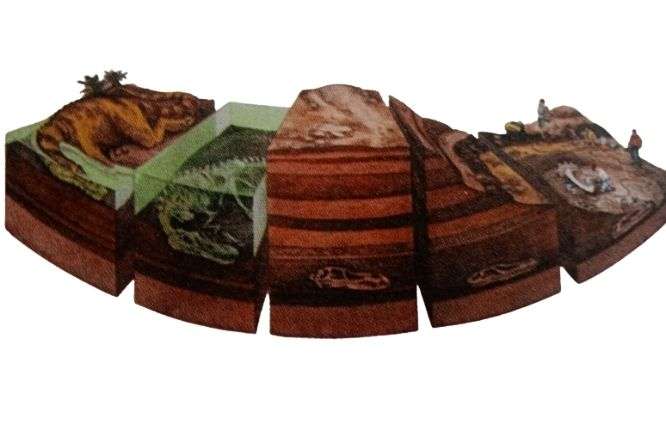
In this article, we will discuss how fossil fuel are formed in a very simple way.
What are Fossil Fuels?
Fossil fuels are the non-renewable sources of energy that are formed from the dead bodies of living beings after millions of years.
Fossil fuels are categorized into 2 categories. They are:
- Coal
- Petroleum (a) Mineral Oil (b)Natural Gasses
At present, people use fossil fuels widely in industries, vehicles, kitchen, etc. as the main sources of energy.
Overuse of these non-renewable energy sources brings an energy crisis and pollution in the environment.
Coal
Coal is a black or brown carbonaceous deposit formed by plant fossils.
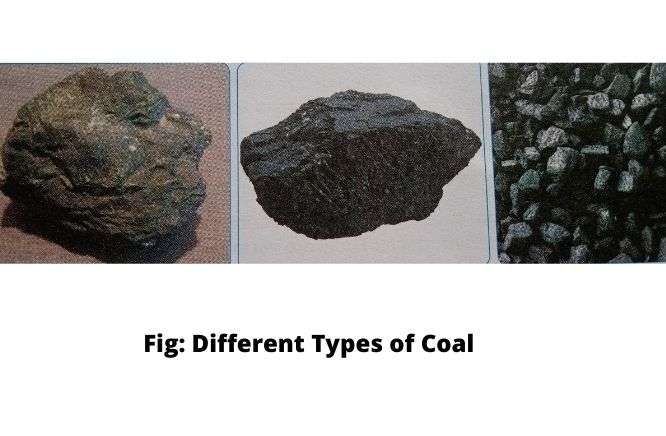
We can find it in the form of a thick layer inside the earth and to bring it out, we have to mine it.
The main components of coals:
1. Cellulose
2. Lignin: Lignin forms from the wood of plants which contains protein, oil, organic acid and salts in it.
Mainly, there are 4 types of coal. The types of coal, hardness, color and other properties are shown in the following table.
| S. No. | Types of Coal | Color | Preselect Fossils |
| 1. | Lignite | Brown | Visible |
| 2. | Sub-bituminous | Black | Visible |
| 3. | Bituminous | Black | Visible under microscope |
| 4. | Anthracite | Black & Shiny | Visible under microscope |
| Hardness | Weathering Property | Other Properties |
| Soft | Weathers easily | Burns with smoke, loosely held particles |
| Slightly hard | Weathers easily | Burns with less flame, waxy |
| Hard | Does not weather easily | Burns with blue flame |
| Hard | Does not weather easily | Brittle, burns without smoke |
Out of these types of coal, Lignite is the worst whereas Anthracite is the best type of coal.
Formation of Coal
On the basis of geological evidence, scientists believe that coal had formed from the fossils of plants in the carboniferous period [345-280 million years ago].
In this period, forest of coal plants (fast growing bushes and giant tree ferns) grew in the shrimp of the earth.
When they died and fell into quite swamp water, they got protected against rotting.
Bacteria and geothermal energy changed some parts of the wood into gasses that escaped out.
The left was a remaining black mixture containing mostly carbon that became a coal seam (cold layer).
In course of time, the increasing pressure from the overlying mud and sand squeezed out most of the liquid.
This left behind a pasty mass which slowly hardened into coal.
The layer of coal inside the earth may vary from some inches to several feet.
In this way, the formation of coal took place inside the earth.
Importance of Coal
We use coal for the following purposes:
1. We use it in industries, houses and other places for heating and generating electricity.
2. Coal tar obtained from coal is often used for the manufacturing of plastic.
3. We use coal as fuel in steam engines to change water into steam.
4. In some counties, coal is the main source of the national economy.
5. We use it for manufacturing petroleum and synthetic natural gas.
Mineral Oil
The word petroleum is derived from the Latin word petr which means “rock” and oleum which means “oil”; so, it is rock oil.
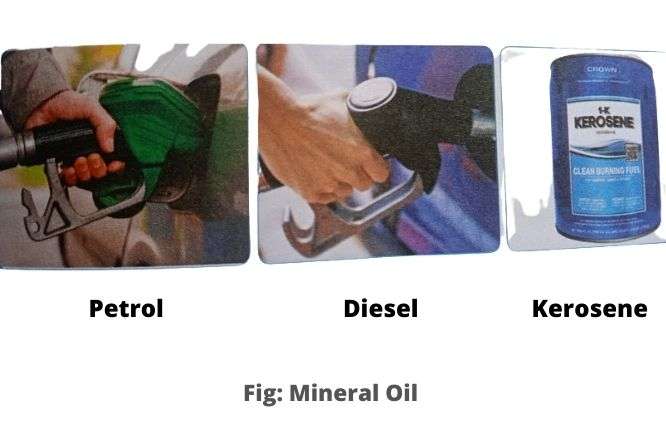
Oil and Natural gas together are called petroleum.
The products obtained from petroleum are:
· Paraffin
· Fuel
· Lubricating Oil
· Kerosene
· Grease
· Wax
· Asphalt
Usually, Hydrogen covers 90-95% of petroleum; the rest part is Oxygen, Sulfur, Nitrogen, etc.
Formation of Mineral Oil
The mechanism of the formation of mineral oil is open for speculation but scientists believe that petroleum had formed from dead bodies of plants and animals.
As the plants and animals died, they piled up on the sea bottom.
In course of time, millions of tons of sand and mud covered them.
Under pressure, the mud and sand changed into rock.
The formed rocks created a very high pressure on the dead bodies.
Because of high pressure at moderate temperature, scarcity of oxygen, and by the action of bacteria, the dead bodies were converted into a dark liquid trapped in the pore of the rocks, which was crude oil or petroleum.
It takes millions of years to form crude oil.
The petroleum thus formed is stored between two impervious layers of the rocks.
The product obtained after the refining of crude oil and their uses are given below:
| S. No. | Petroleum | Uses |
| 1. | Liquefied petroleum gas [L.P.G] | Gas fuel, manufacturing of other organic chemicals |
| 2. | Petroleum Ether | Solvent, Cleaning |
| 3. | Diesel | Vehicles’ fuel |
| 4. | Kerosene | Fuel |
| 5. | Lubricating oil, grease | Lubrication |
| 6. | Vaseline, grease | Medicine |
| 7. | Paraffin Wax | Manufacturing of Candle and Matches |
| 8. | Petroleum Cake, Bitumen Asphalt | Fuel, Construction of Road |
| 9. | Petrol | Fuel |
Importance of Mineral Oil
Some major uses of mineral oil are as the following:
1. Lubricant: It is used as a lubricant.
2. Fuel: It is used as a fuel for cooking food and also used in vehicles to run engines. It is often used in many industries as a fuel.
3. Road Construction: It is used in construction of road (black tar or bitumen).
4. Compound Manufacturing: It is used in manufacturing of compounds like plastics, chemical fertilizers, pesticides, paints, explosives, medicine, etc.
Fossil
A fossil is the mark or hardened remains of a plant or animal that lived thousands or millions of years ago.
Some fossils are leaves, shells or skeletons that were preserved after a plant or animal passes away.
Most of them are found in sedimentary rocks.
Animal fossils range from tiny microscopic to gigantic dinosaur bone in size.
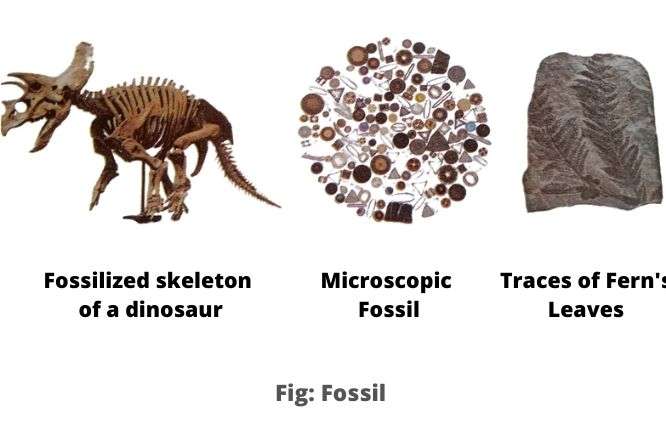
Identification of Fossils
Several types of fossils can be identified by comparing the different shapes and parts of organs.
Some methods of identification of fossils are mentioned below.
1. Dead Body Traces: Traces of dead bodies are formed on sedimentary rocks which can be identified as fossils. Such tracking may be a part or the whole part of a body.
2. Skeleton: A part of the skeletal system or the whole skeleton preserved in sedimentary rocks is a fossil.
3. Mold & Cast: A fossil may be in the form of molds and casts.
4. Hard Part: The hard part of animals like shells and of plants like wood also may be preserved in sedimentary rocks as fossils.
Process of Fossil Formation
The process of forming fossils is called fossilization.
Any organism after its death may or may not be fossilized.
However, under favorable conditions, the organisms which are composed of completely soft parts may be fossilized.
For instance, jellyfish have been wholly preserved.
On the other hand, even an organism with hard parts will not necessarily be fossilized.
A number of factors affect fossilization but the two factors given below play the chief role in this process.
1. If the animal has hard body parts, the chance of fossilization increases.
2. The organism must be covered by protective materials shortly after the death.
Ways of Fossilization
There are many ways of fossilization; some of them are mentioned below:
1. The animals that live in or nearby water sometimes get covered by the sediment like mud, dirt and gravel and harden into rock. The hard parts of the body, like teeth and skeleton are preserved in their original form in the rock. The fossil is exposed at the surface by geographical activities like faulting and surface erosion.
2. Some fossils are formed when animals are frozen in ice and preserved to the core.
3. Organisms are also fossilized in the form of casts in sediments. The water inside the sediment dissolves the hard parts, leaving a hollow space in the sediment. The hollow shape is called mold; the space is then filled with minerals which harden to form a cast.
4. Replacement of mineral instead of organic material of the dead bodies in sediment gets petrified (turns into stone). Fossilization occurs in this way as well.
Except the above methods, some other ways of fossilization are:
1. Preservation of footprints of animals
2. Tracing of leaves on sedimentary rocks
Importance of Fossils
Fossils are very useful for the following purposes:
1. They provide evidence of the evolution of living beings.
2. They help to know about the extinct animals and plants.
3. They show the history of the location from where a fossil is obtained.
4. Fossil fuels like coal and petroleum are the main sources of energy.
5. They help to make geological time scale.
FAQs
Why are fossils advantageous to us in many ways?
It is because many of the fossils like coal and mineral oil are used as fuel and by the study of fossils, we can know about the history of the earth and other organisms.
The main uses of fossils are:
1. To provide evidence of evolution.
2. For making Geological Time Scale.
3. To determine the mines of coal and petroleum.
Why is the use of fossil fuels not so good?
It is because they are present in limited amounts on the earth.
When they are burnt as a fuel, they cause air pollution by mixing some harmful gasses and smoke in the air.
As fossil fuels are non-renewable sources of energy, they will be depleted in the near future.
Why are fossils found in sedimentary rocks?
It is because fossils are formed in rocks by sedimentation of things over the dead bodies.
The things which cover the dead bodies change into sedimentary rocks in which fossils are preserved.
Similarly, only sedimentary rocks are not formed at high temperature, otherwise the dead bodies could destroy.
How fossil fuels show the earth and humans didn’t originate at the same time?
It is because the study of fossils shows that the earth originated about 4,600 million years ago but human beings originated about 2 million years ago only.
Some evidence also shows that at the time of the origin of the earth, it did not have the atmosphere like the present time.
Thus, it also can be said that none of the organisms originated.
They were at their peak in the Jurassic period of the same Era.
In the Cretaceous period, dinosaurs became extinct because they could not adjust themselves in the changing environment.
Are all the remaining parts of the dead bodies fossilized?
All the remaining parts of the dead bodies are not fossilized.
The following conditions are required to fossilize dead bodies:
1. Hard part of the organisms has more chance of fossilization.
2. The part fossilized must be covered by protective materials, shortly after death.



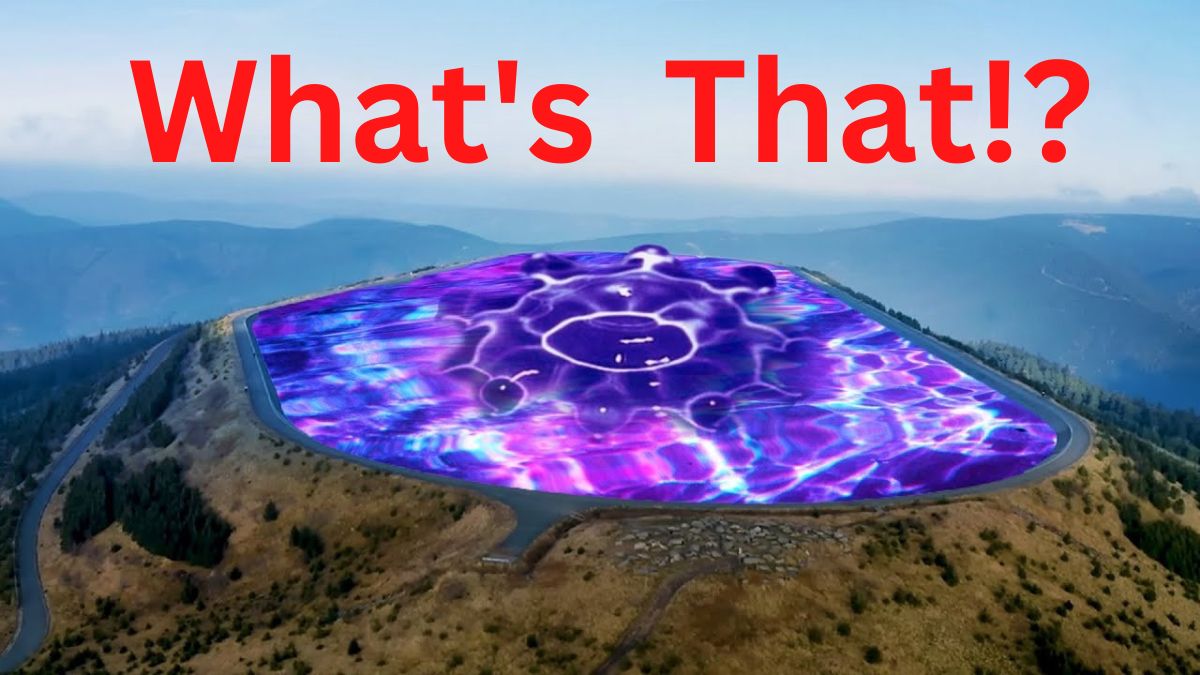
![Moon Jellyfish has [ Hidden Secrets ] You don't know moon jellyfish](https://spaceupper.com/wp-content/uploads/2022/11/1-1.jpg)

